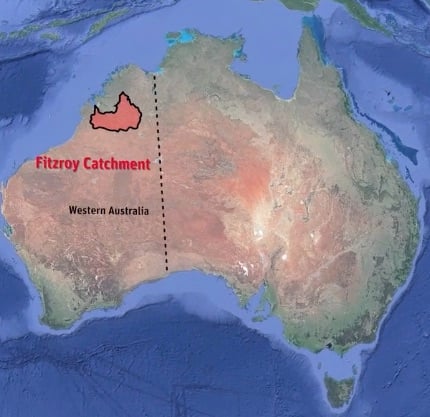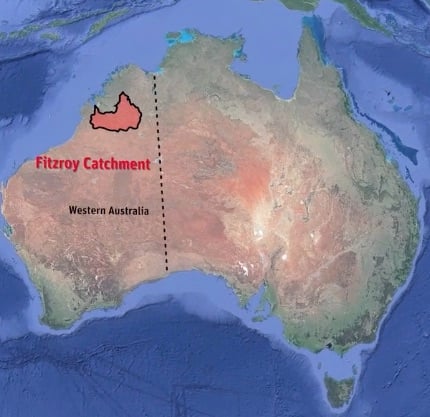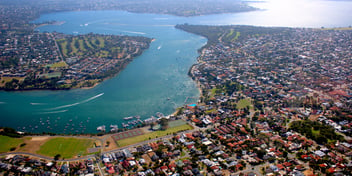Federal Budget puts focus on building water infrastructure

The Australian water sector will receive a raft of new investments from the Federal Government, with the 2020-21 Budget focusing on bolstering water security and regional development.
Treasurer Josh Frydenberg announced three key measures relating to the Australian water sector, including investment in water infrastructure, investment in Murray-Darling Basin communities and investment in the Bureau of Meteorology’s services.
“The Government is building water infrastructure for the 21st century, helping to increase our water security, build regional resilience, deliver jobs and grow our critical agriculture sector,” Frydenberg said.
“An investment of $2 billion for new projects under the National Water Infrastructure Development Fund will support the next generation of water infrastructure through the grid.”
The National Water Infrastructure Development Fund is an Australian Government initiative, delivered through the states and territories, that aims to accelerate the assessment of water infrastructure proposals in order to stimulate regional economic activity and development.
Frydenberg has also announced further investment in the Murray-Darling Basin, with the aim of improving environmental health and supporting basin regions, as well as $250 million for the Bureau of Meteorology’s forecast and warning service.
“The Government is also investing $270 million in the Murray-Darling Communities Investment Package, which will improve the health of the Basin while supporting regional development,” Frydenberg said.
Prioritising investment
The Australian Water Association’s (AWA) key water reform priorities and infrastructure investments were recently outlined in the recommendations submitted to the National COVID-19 Coordination Commission and separately in the submission on the review of the National Water Initiative.
These priorities included a focus on water security through diversity of supplies, greater investment in water supply system resilience and a strengthened focus on water security and water quality in regions via infrastructure and technology innovation.
The priorities also focus on rural water, groundwater management, community engagement in water management and planning, research and development and a national reform agenda.
AWA CEO Corinne Cheeseman said the water sector has a key role to play in bolstering the national economy as states and territories work towards post-COVID-19 recovery.
“The water sector provides essential services to Australians, is important for agriculture and businesses across the industrial and services sector, and enhances the liveability of our urban and regional communities,” Cheeseman said.
“These efforts warrant national attention and leadership, as the efficiency and quality of its services can impact the national economy, the productivity of cities, and the health and wellbeing of all Australians.
Cheeseman said the AWA looks forward to working with the government and water sector in supporting nationally coordinated water infrastructure investments.
Diversification key to security
The latest WSAA report All options on the table: urban water supply options for Australia outlines the need for continued efforts towards pursuing diverse water security options as Australia’s potable, wastewater and irrigation needs continue to grow.
“While this report seeks to increase understanding around the attributes of different supply options it also aims to initiate an ongoing conversation,” the report states.
“We call on governments to allow all options for water supply to be on the table for planning decisions. Every urban community has its own context, but all options for water supply should be on the table for those communities to consider and support.”
The report states that existing sources of water supply in Australia as of 2018-19 include: surface water (82%), groundwater (8%), recycled water for non-residential use (6%) and seawater desalination (4%).
Government support for diversification is crucial, the report states, with an increase in recycled water use and stormwater harvesting required to support local communities.
“In Australia the primary limitations are not technical, but rather around public perception and political will,” the report states.
“In practice it makes sense to have a portfolio of options available, which includes both supply and demand side opportunities, to ensure water resilience for cities and regions.
“In the case of purified recycled water for drinking, experience globally and in Western Australia, has shown that any potential community concerns can be addressed through effective education and engagement.”
With surface water under increased pressure from population growth and climate change, diversification of sources in now a key priority for the water sector.
Moving forward
More than $145 million has already been committed to over 50 feasibility projects through the Australian Government’s National Water Infrastructure Development Fund, with the aim of identifying and building water infrastructure to increase water security for primary industries including agriculture, to support regions and to create drought resilience.
The feasibility studies include business case research for dams and large-scale infrastructure, irrigation schemes, asset upgrades, aquifer recharge programs, water security projects, water recycling schemes, as well as resource modelling initiatives.
Some of the feasibility studies recently completed or currently underway include:

The Northern Australian Water Resource assessment, led by CSIRO, which involves an integrated,multidisciplinary investigation of opportunities for water and agriculture across northern Australia.
The Great Artesian Basin Resource Model, led by Geoscience Australia, which involves assessing the status of groundwater throughout the GAB in order to ensure effective resource management.
The Western Trade Coast Managed Aquifer Recharge Feasibility Study, seeking to support growing industrial development via new water sources, so as to reduce pressure on local groundwater supplies.
The Hells Gates Dam Scheme and Big Rocks Weir Project Feasibility Study, aiming to provide strategic planning and coordination of Federal Government resources to deliver water security and boost agriculture in northern Queensland.

